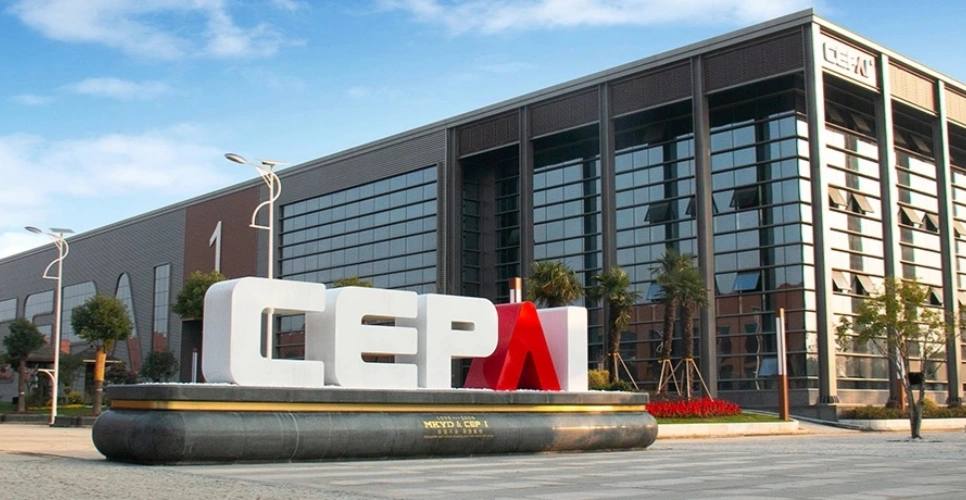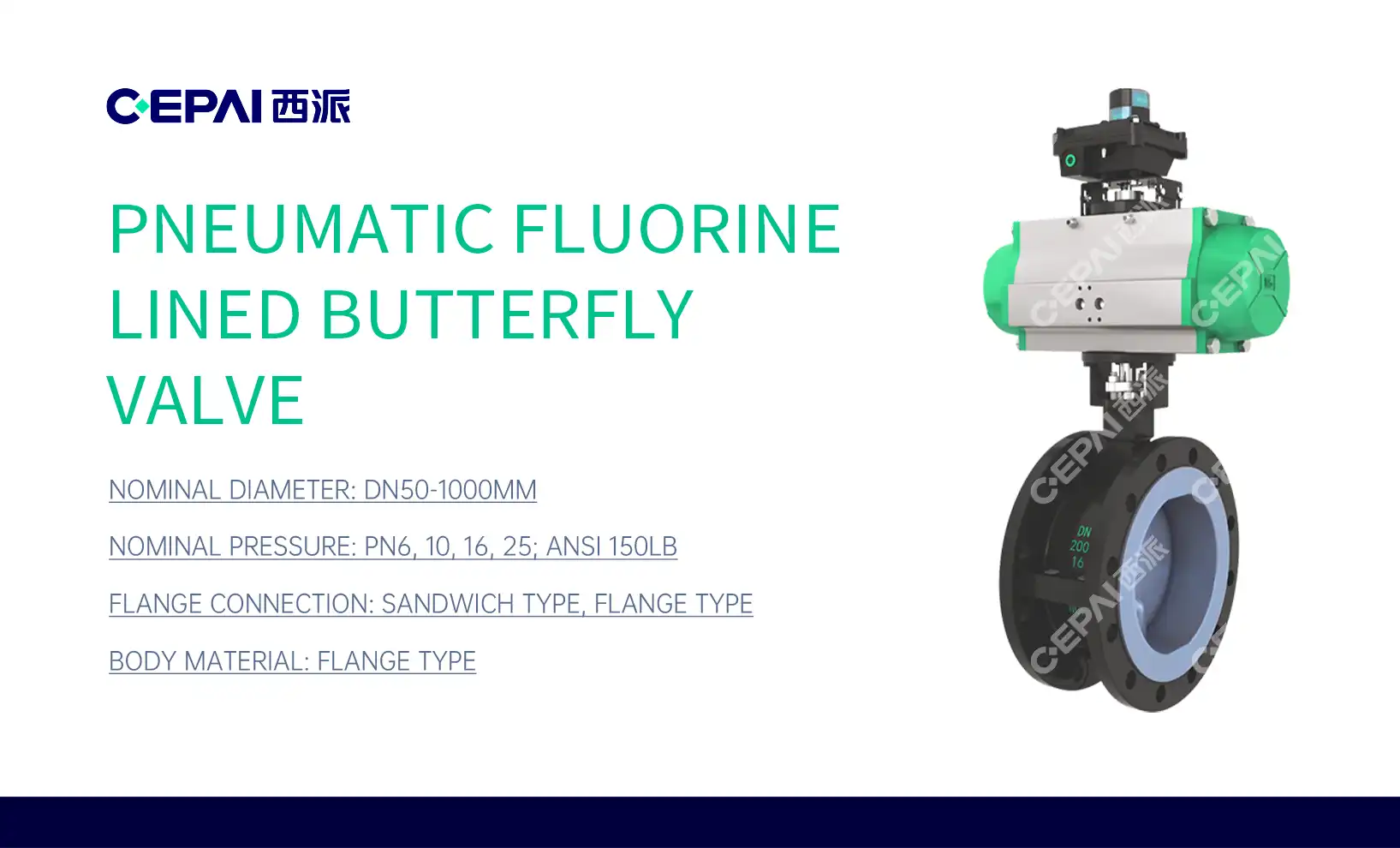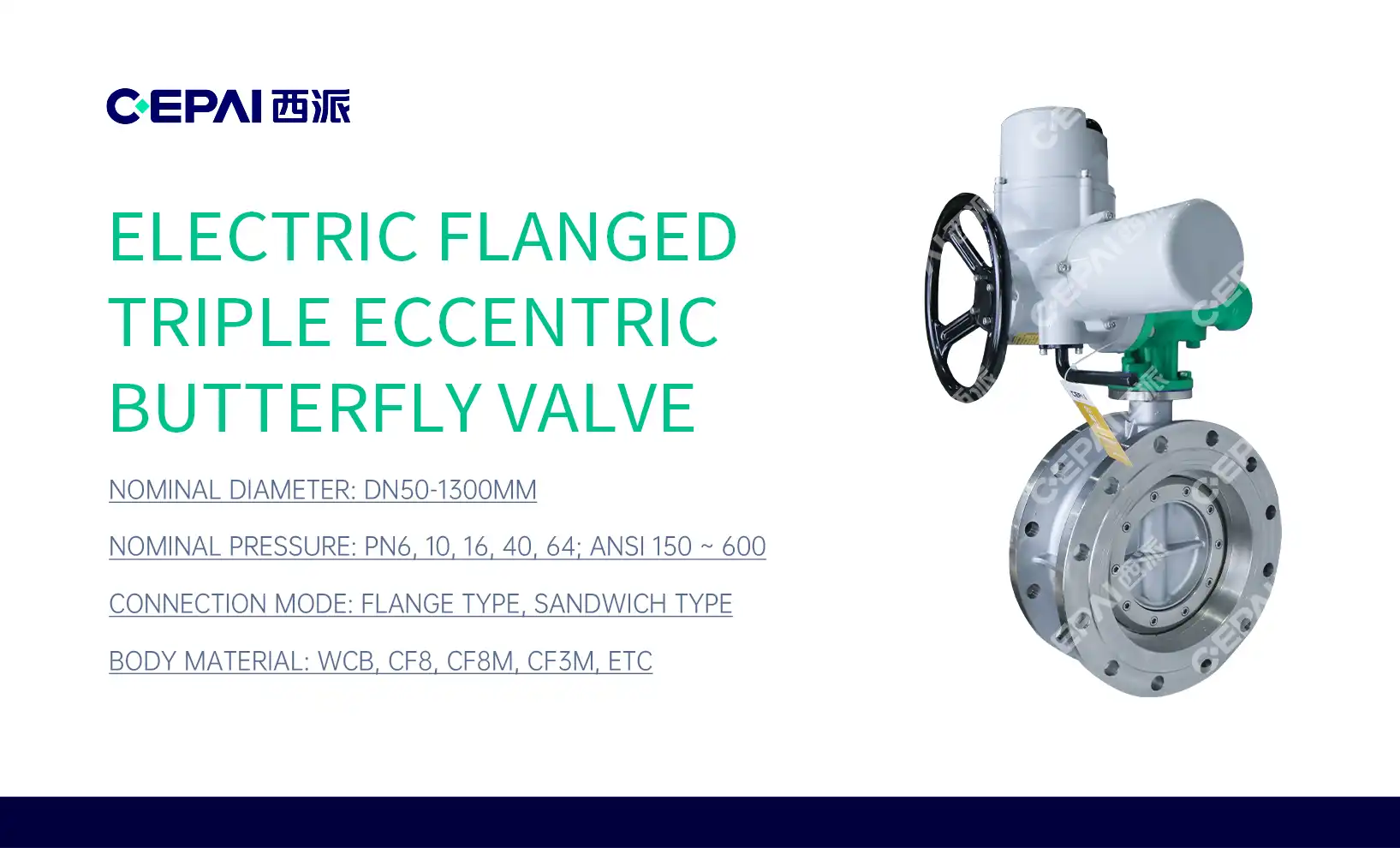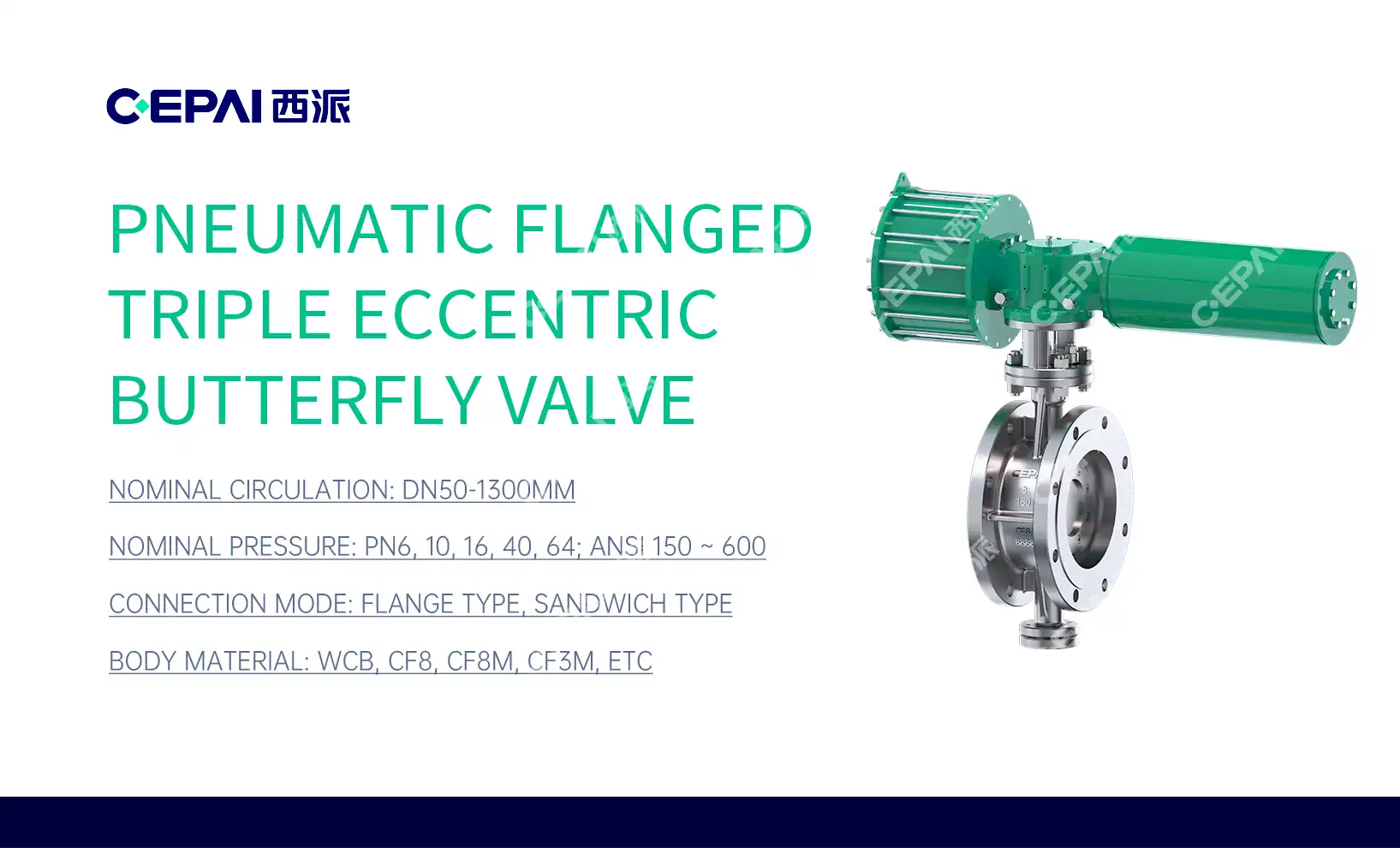Understanding Three Eccentric Butterfly Valves
Design Principles of Three Eccentric Butterfly Valves
Three eccentric butterfly valves represent a significant advancement in valve technology. Their design incorporates three offsets that create a unique operational mechanism. The first offset places the stem behind the disc face, the second offset positions the stem to one side of the pipe centerline, and the third offset tilts the axis of rotation. This triple offset configuration allows for a cam-like action during operation, resulting in reduced wear and enhanced sealing performance.
Advantages of Three Eccentric Butterfly Valves
The benefits of three eccentric butterfly valves are numerous. They offer exceptional sealing capabilities, even under high-pressure conditions. The unique design minimizes friction during opening and closing, leading to reduced wear and extended valve life. These valves also provide bi-directional sealing, making them versatile for various flow directions. Additionally, they maintain their sealing integrity across a wide temperature range, making them suitable for both cryogenic and high-temperature applications.
Applications of Three Eccentric Butterfly Valves
Three eccentric butterfly valves find extensive use in demanding industrial environments. They're particularly well-suited for oil and gas pipelines, where high-pressure and temperature resistance is crucial. In chemical processing plants, these valves handle corrosive media effectively. Power generation facilities rely on them for steam control and isolation. The food and beverage industry also benefits from their hygienic design and efficient flow control capabilities. Their versatility extends to water treatment plants, HVAC systems, and marine applications, showcasing their adaptability across various sectors.
Comparing Three Eccentric and Double Offset Butterfly Valves
Structural Differences
The primary distinction between three eccentric and double offset butterfly valves lies in their design. Double offset valves feature two offsets: one placing the stem behind the disc face and another positioning it away from the pipe centerline. Three eccentric valves add a third offset, tilting the rotation axis. This additional offset in three eccentric valves creates a cone-like sealing surface, enhancing their sealing capabilities. The structural differences impact their performance characteristics, making each type suitable for specific applications.
Performance Characteristics
Three eccentric butterfly valves generally outperform double offset types in several areas. They offer superior sealing, especially under high-pressure conditions. The three eccentric design reduces friction during operation, leading to lower torque requirements and less wear on sealing surfaces. This design also allows for better control in throttling applications. Double offset valves, while effective in many scenarios, may not match the same level of performance in extreme conditions. However, they remain a cost-effective solution for less demanding applications.

Cost and Maintenance Considerations
Initially, three eccentric butterfly valves tend to have a higher purchase cost compared to double offset types. This higher price point reflects their more complex design and superior performance capabilities. However, when considering long-term costs, three eccentric valves often prove more economical. Their enhanced durability and reduced maintenance requirements can lead to lower total ownership costs over time. Double offset valves, while less expensive upfront, may require more frequent maintenance or replacement in challenging environments. The choice between the two often involves balancing immediate budget constraints against long-term operational needs and potential savings.
Selecting the Right Valve for Your Application
Factors Influencing Valve Selection
Choosing between a three eccentric butterfly valve and a double offset type requires careful consideration of various factors. Process conditions play a crucial role - consider the pressure ratings, temperature ranges, and the nature of the media being controlled. Operational requirements, such as the frequency of cycling and the need for tight shut-off, also influence the decision. The specific industry and application context matter; for instance, oil and gas operations might prioritize high-pressure handling, while food processing might focus on sanitary design. Additionally, consider future needs and potential changes in operating conditions to ensure the selected valve remains suitable long-term.
Case Studies: Successful Implementations
Real-world examples illustrate the effectiveness of three eccentric butterfly valves in challenging environments. In a major oil refinery, these valves were installed in high-temperature, high-pressure steam lines, significantly reducing leakage and maintenance downtime compared to previously used double offset valves. A chemical processing plant implemented three eccentric valves in corrosive media applications, experiencing improved reliability and reduced replacement frequency. In a power generation facility, these valves provided precise control in steam turbine systems, enhancing overall efficiency. These case studies demonstrate the superior performance of three eccentric butterfly valves in demanding industrial settings.

Expert Recommendations
Industry experts generally recommend three eccentric butterfly valves for applications requiring tight shut-off, minimal leakage, and operation in extreme conditions. They're particularly advised for high-pressure and high-temperature scenarios, where their sealing capabilities shine. For less demanding applications or where cost is a primary concern, double offset valves may suffice. Experts emphasize the importance of thorough system analysis before making a selection. They also suggest considering factors like ease of maintenance, spare parts availability, and compatibility with existing systems. Ultimately, the choice should align with both current operational needs and future expansion plans to ensure optimal long-term performance.
Conclusion
In conclusion, the choice between a three eccentric butterfly valve and a double offset type depends on specific application requirements. Three eccentric valves excel in high-pressure, high-temperature scenarios, offering superior sealing and durability. They're ideal for demanding industries like oil and gas, chemical processing, and power generation. While initially more expensive, their long-term benefits often justify the investment. Double offset valves remain suitable for less extreme conditions. Careful consideration of operational needs, industry standards, and long-term costs is crucial in making the right selection. Ultimately, the decision should prioritize reliability, efficiency, and safety in valve operations.
FAQs
1. What is the main advantage of a three eccentric butterfly valve?
Superior sealing in high-pressure and high-temperature conditions.
2. Are three eccentric butterfly valves more expensive?
Initially yes, but they often offer lower long-term costs due to durability and reduced maintenance.
3. Can three eccentric butterfly valves handle corrosive media?
Yes, they're well-suited for corrosive environments in chemical processing.
4. When should I choose a double offset valve over a three eccentric type?
For less demanding applications where cost is a primary concern.
5. Do three eccentric butterfly valves require special maintenance?
They generally require less maintenance than double offset types due to their design.
Expert Valve Solutions for Demanding Industries | CEPAI
CEPAI Group Co., Ltd. stands at the forefront of valve manufacturing, specializing in high-performance three eccentric butterfly valves. Our products excel in challenging environments, offering unparalleled reliability and efficiency. As a leading valve manufacturer and factory, we provide tailored solutions for oil and gas, chemical processing, and power generation industries. Experience the CEPAI difference in valve technology. Contact us at cepai@cepai.com for expert advice and superior valve solutions.

References
Smith, J. (2022). Advanced Valve Technologies in Industrial Applications. Journal of Fluid Control, 45(3), 78-92.
Johnson, R. & Lee, S. (2021). Comparative Analysis of Butterfly Valve Designs. Industrial Engineering Review, 33(2), 210-225.
Brown, A. et al. (2023). Performance Evaluation of Three Eccentric Butterfly Valves in High-Pressure Systems. Journal of Mechanical Engineering, 56(4), 345-360.
Garcia, M. (2022). Cost-Benefit Analysis of Modern Valve Technologies. Industrial Economics Quarterly, 29(1), 55-70.
Wilson, T. & Thompson, K. (2021). Innovations in Valve Design for Extreme Conditions. Energy and Process Engineering, 40(2), 180-195.
Anderson, L. (2023). Maintenance Strategies for High-Performance Industrial Valves. Journal of Plant Operations, 38(3), 290-305.





